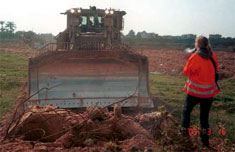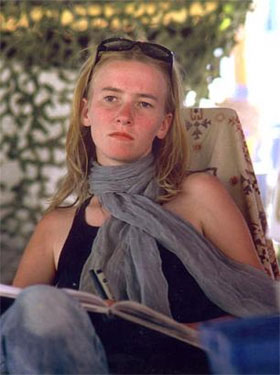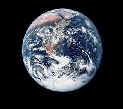www.aljazeerah.info
Opinion Editorials, March 2013
Archives
Mission & Name
Conflict Terminology
Editorials
Gaza Holocaust
Gulf War
Isdood
Islam
News
News Photos
Opinion Editorials
US Foreign Policy (Dr. El-Najjar's Articles)
www.aljazeerah.info
Of Hope and Pain:
Rachel Corrie's Rafah Legacy
By Ramzy Baroud
Al-Jazeerah, CCUN, March 23, 2013
 |
***
“Hi Papa .. Don’t worry about me too much, right now I am most concerned
that we are not being effective. I still don’t feel particularly at risk.
Rafah has seemed calmer lately,” Rachel Corrie wrote to her father, Craig,
from Rafah, a town located at the southern end of the Gaza Strip.
‘Rachel’s last email’ was not dated on the Rachel Corrie Foundation website.
It must have been written soon after her last email to her mother, Cindy, on
Feb 28. She was killed by an Israeli bulldozer on March 16, 2003.
Immediately after her painful death, crushed beneath an Israeli army
bulldozer, Rafah embraced her legacy as another ‘martyr’ for Palestine. It
was a befitting tribute to Rachel, who was born to a progressive family in
the town of Olympia, itself a hub for anti-war and social justice activism.
But Olympia is also the capital of Washington State. Politicians here can be
as callous, morally flexible and pro-Israel as any other seats of government
in the US, where sharply dressed men and women jockey for power and
influence. Ten years after Rachel’s death, the US government is yet to hold
Israel to account. Neither is justice expected anytime soon.
Bordering Egyptian and Israeli fences, and ringed by some of the poorest
refugee camps anywhere, Rafah has never ceased being a news topic in years.
The town’s gallantry of the First Palestinian Uprising (Intifada) in 1987
was the stuff of legends among other resisting towns, villages and refugee
camps in Gaza and the rest of Palestine. The Israeli army used Rafah as a
testing ground for a lesson to be taught to the rest of Palestinians. Thus,
its list of ‘martyrs’ is one of the longest, and it is unlikely to stop
growing anytime soon. Many of Rafah’s finest perished digging tunnels into
Egypt to break the Israeli economic blockade that followed Palestine’s
democratic elections in 2006. Buried under heaps of mud, drowning in
Egyptian sewage water, or pulverized by Israeli missiles, some of Rafah’s
men are yet to be located for proper burial.
Rafah agonized for many
years, not least because it was partially encircled by a cluster of illegal
Jewish settlements - Slav, Atzmona, Pe'at Sadeh, Gan Or and others. The
residents of Rafah were deprived of security, freedom, and even for extended
periods of time, access to the adjacent sea, so that the illegal colonies
could enjoy security, freedom and private beaches. Even when the settlements
were dismantled in 2005, Rafah became largely entrapped between the Israeli
military border, incursions, Egyptian restrictions and an unforgiving siege.
True to form, Rafah continues to resist.
Rachel and her
International Solidarity Movement (ISM) friends must have appreciated the
challenge at hand and the brutality by which the Israeli army conducted its
business. Reporting for the British Independent newspaper from Rafah, Justin
Huggler wrote on Dec. 23, 2003: “Stories of civilians being killed pour out
of Rafah, turning up on the news wires in Jerusalem almost every week. The
latest, an 11-year-old girl shot as she walked home from school on
Saturday.” His article was entitled: “In Rafah, the children have grown so
used to the sound of gunfire they can’t sleep without it.” He too “fell
asleep to the sound of the guns.”
Rafah was affiliated with other
ominous realities, one being house demolitions. In its report, Razing Rafah,
published Oct 18, 2004, Human Rights Watch mentioned some very disturbing
numbers. Of the 2,500 houses demolished by Israel in Gaza between 2000-04,
“nearly two-thirds of these homes were in Rafah... Sixteen thousand people,
more than ten percent of Rafah's population, have lost their homes, most of
them refugees, many of whom were dispossessed for a second or third time.”
Much of the destructions occurred so that alleyways could be widened to
secure Israeli army operations. Israel’s weapon of choice was the
Caterpillar D9 bulldozer, which often arrived late at night.
Rachel
Corrie was also crushed by the same type of US manufactured and supplied
bulldozer that terrorized Rafah for years. It is no wonder that Rachel’s
photos and various graffiti paintings adorn many walls of Rafah streets.
Commemorating Rachel’s death anniversary for the tenth time, activists in
Rafah gathered on March 16. They spoke passionately of the American girl who
challenged an Israeli bulldozer so that a Rafah home could remain standing.
A 12-year-old girl thanked Rachel for her courage and asked the US
government to stop supplying Israel with weapons that are often used against
civilians.
While Rafah carried much of the occupation brunt and the
vengeance of the Israeli army, its story and that of Rachel's was merely
symbolic of the greater tragedy which has been unfolding in Palestine for
many years. Here is a quick summary of the house demolition practice of
recent years, according to the Israeli Committee against House Demolitions,
also published in Al Jazeera August 2012:
The Israeli government
destroyed 22 homes in East Jerusalem and 222 homes in West Bank in 2011,
leaving nearly 1,200 people homeless. During the war on Gaza (Dec 2008 - Jan
2009), it destroyed 4,455 homes, leaving 20,000 Palestinians displaced and
unable to rebuild due to the restrictions imposed by the siege. (Other
reports give much higher estimates.) Since 1967, the Israeli government
destroyed 25,000 homes in the occupied territories, rendered 160,000
Palestinians homeless. Numbers can be even grimmer if one is to take into
account those who were killed and wounded during clashes linked to the
destructions of these homes.
So, when Rachel Corrie stood with a
megaphone and an orange high-visibility jacket trying to dissuade an Israeli
bulldozer driver from demolishing yet another Palestinian home, the stakes
were already high. And despite the inhumane caricaturing of her act by
pro-Israeli US and other western media, and the expected Israeli court
ruling last August, Rachel’s brave act and her subsequent murder stand at
the heart of the Palestinian-Israeli conflict. It highlighted the
ruthlessness of the Israeli army, put to shame Tel Aviv’s judicial system,
confronted the international community with its utter failure to provide
protection for Palestinian civilians and raised the bar even higher for the
international solidarity movement.
The Israel court verdict last
August was particularly sobering and should bring to an end any wishful
thinking that Israel’s self-tailored judicial system is capable of achieving
justice, neither for a Palestinian, nor an American. “I reached the
conclusion that there was no negligence on the part of the bulldozer
driver,” Judge Oded Gershon said as he read out his verdict in a Haifa
District Court in northern Israel. Rachel’s parents had filed a law suit,
requesting a symbolic $1 in damages and legal expenses. Gershon rejected the
suit, delineated that Rachel was not a ‘reasonable person’ and, once more
blamed the victim, as has been the case with thousands of Palestinians for
many years. “Her death is the result of an accident she brought upon
herself,” he said. It all sounded that demolishing homes as a form of
collective punishment was just another ‘reasonable’ act, deserving of legal
protection. In fact, per Israeli occupation rules, it is.
Rachel’s
legacy will survive even Gershon’s charade court proceeding and much more.
Her sacrifice is now etched into a much larger landscape of Palestinian
heroism and pain.
“I think freedom for Palestine could be an
incredible source of hope to people struggling all over the world,” she
wrote to her mother nearly two weeks before her death. “I think it could
also be an incredible inspiration to Arab people in the Middle East, who are
struggling under undemocratic regimes which the US supports.”
-
Ramzy Baroud (www.ramzybaroud.net)
is an internationally-syndicated columnist and the editor of
PalestineChronicle.com. His latest book is: My Father was A Freedom Fighter:
Gaza's Untold Story (Pluto Press).
|
|
|
|
||
|
||||||



